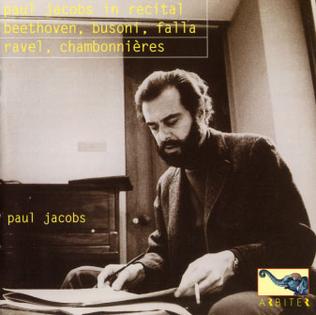Related Research Articles

Sir Charles Villiers Stanford was an Anglo-Irish composer, music teacher, and conductor of the late Romantic era. Born to a well-off and highly musical family in Dublin, Stanford was educated at the University of Cambridge before studying music in Leipzig and Berlin. He was instrumental in raising the status of the Cambridge University Musical Society, attracting international stars to perform with it.

John Nicholson Ireland was an English composer and teacher of music. The majority of his output consists of piano miniatures and of songs with piano. His best-known works include the short instrumental or orchestral work "The Holy Boy", a setting of the poem "Sea-Fever" by John Masefield, a formerly much-played Piano Concerto, the hymn tune Love Unknown and the choral motet "Greater Love Hath No Man".

Cécile Louise Stéphanie Chaminade was a French composer and pianist. In 1913, she was awarded the Légion d'Honneur, a first for a female composer. Ambroise Thomas said, "This is not a woman who composes, but a composer who is a woman."
Nikolai Demidenko is a Russian-born classical pianist.
Harold Truscott was a British composer, pianist, broadcaster and writer on music. Largely neglected as a composer in his lifetime, he made an important contribution to the British piano repertoire and was influential in spreading knowledge of a wide range of mainly unfashionable music.

Leslie John Howard is an Australian pianist, musicologist and composer. He is best known for being the only pianist to have recorded the complete solo piano works of Franz Liszt, a project which included more than 300 premiere recordings. He has been described by The Guardian as "a master of a tradition of pianism in serious danger of dying out".
Georgy Lvovich Catoire was a Russian composer of French heritage.

Paul Jacobs was an American pianist. He was best known for his performances of twentieth-century music but also gained wide recognition for his work with early keyboards, performing frequently with Baroque ensembles.

Edwin York Bowen was an English composer and pianist. Bowen's musical career spanned more than fifty years during which time he wrote over 160 works. As well as being a pianist and composer, Bowen was a talented conductor, organist, violist and horn player. Despite achieving considerable success during his lifetime, many of the composer's works remained unpublished and unperformed until after his death in 1961. Bowen's compositional style is widely considered ‘Romantic’ and his works are often characterized by their rich harmonic language.
Frank Merrick CBE was an English classical pianist and composer in the early 20th century.

Alan Gray was an English organist and composer.

Marie Novello, also known as Marie Novello Williams was a Welsh pianist. She was one of Theodor Leschetizky's last students and performed in public from childhood. Her early death cut short a promising career just as she began to record for one of the major English labels, having already amassed a considerable discography for one of its second-rank competitors.
Albert Ferber was a Swiss pianist who had an international performing career that spanned four decades and took him across the world.
Maurice Cole, was an English pianist, teacher and adjudicator. He was born in London and studied at the Guildhall School of Music and privately with Arthur De Greef in London and Brussels.

Kenneth Leighton was a British composer and pianist. His compositions include church and choral music, pieces for piano, organ, cello, oboe and other instruments, chamber music, concertos, symphonies, and an opera. He had various academic appointments in the Universities of Leeds, Oxford and, primarily, Edinburgh.
Malcolm Binns is a British classical pianist.
Roger Sacheverell Coke was an English composer and pianist.
This is a summary of 1914 in music in the United Kingdom.

Charles Villiers Stanford's Violin Sonata No. 2 in A major, Op. 70, was composed around 1898. Performed only once during the composer's lifetime, the sonata remained unpublished until 2006.

The Violin Sonata No. 1 in D major, Op. 11, was composed by Charles Villiers Stanford in 1877, shortly after the composer completed his studies in Germany. It was one of his first pieces of chamber music, preceded only by his A major cello sonata. First performed the year it was composed, the sonata was published in 1878 by Ries & Erler in Germany, with a dedication to violinist Ludwig Straus.
References
- ↑ The Daily Telegraph, October 4, 1975, p.4
- ↑ Biography, Bach Cantatas website
- ↑ Biography, AllMusic
- ↑ Trax Classique – TRXC126, Discogs
- ↑ 'Cécile Chaminade' at Hyperion Records
- ↑ Piano Music of Sir Charles Villiers Stanford: Twenty-Four Preludes Set 1, Priory Records 449 (1996)
- ↑ Stanford Piano Music: Twenty-Four Preludes Set 2, Olympia 638 (1997)
- ↑ 'British Piano Collection Volume 1' (four CDs), Heritage HTGCD405 (2020), reviewed at MusicWeb International
- ↑ 'Truscott: Piano Sonatas, Preludes and Fugues', reviewed at MusicWeb International
- ↑ Piano Music of Trevor Hold, Heritage, HTGCD 294/5
- ↑ The Peter Jacobs Anthology: Twentieth Century British Piano Music, Heritage HTGCD159 (2021)
- ↑ An Anthology of British 20th-century Piano Music , Vols. 1-3 (1998-2000), SearchWorks catalogue entry
- ↑ Biography, Divine Arts Records